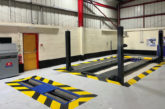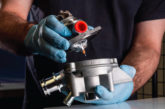
Arun Coumar, Founder of aftermarket consultancy Driven Performance Advisors, presents his guidance on how garages can ensure customer satisfaction with a professional job intake process.
It was a poor customer intake experience that motivated me to start Driven Performance Advisors. I pulled up outside of a garage to have coil overs fitted on my Audi. I had a booking to drop my car off at 8am, which, according to Google, was the start of opening hours.
The shutter was down, and the front door was blocked by a car. I went to the reception where the lights were off. I heard some noises coming from the back of the workshop, so I called out to whoever was back there. One of the technicians, who didn’t speak much English, came up to help me.
I told him I was there to get coil overs fitted and had an 8am booking. I wanted to show someone the coil overs in the boot and indicate what height I wanted them set at. He wasn’t interested in following me outside.
I gave him my keys and left with no idea whether I would see my car again…
When I picked up the car that afternoon, the stance was perfect. I was really happy with the results, but disappointed that my intake process had not inspired confidence in the resulting high-quality service.
In my work with garages, I have developed, observed, and implemented several best practices to ensure customers are satisfied with the job intake process. Here are two of the most important considerations when developing your own job intake process.
Information capture
As customers, we dislike handing over all our personal details. Garages, on the other hand, can never get enough! After all, points of contact can provide abundant opportunities for up-selling.
As customers, we want to provide all the job-related specifications that we care about to ensure our car will look and feel exactly the way we want it to. However, garages know that not all customer requests are possible or sensible. The more freedom they have to do it ‘their way’, the better.
The sweet spot lies in the balance between invasive data collection and important detail capture. But what information should you consider? Here is a list of the basics:
- Customer name
- Contact phone number
- Contact email address
- Customer address
- Instagram account
- Car make and model
- Number plate
- Services and parts requested
- Detailed customer specifications
- Immobiliser details
I invite you to pick and choose from this list. It’s far from exhaustive, but it makes for a good starting point.
Convert your request for information into a form. Make one form for new customers that includes all contact and vehicle information, and one form for returning customers that only has job details. Depending on the ‘luxury’ level of your customer experience, you can have a customer service representative fill out the form for the customer, or you can have the customer do it themselves.
Once properly developed, this process will take no more than 60 seconds. Your customers and your sales team will appreciate it.
Contracts with customers
When your customer drops off their car, are you certain that there is a mutual understanding about what happens next?
I have encountered hesitant answers to this question many times. There is a solution: a simple agreement that the customer can sign which lays out all important information about the forthcoming job.
Certain elements of the work to be performed and terms of your services should be confirmed by both you and your customers in advance. Putting these elements in writing and getting an agreement from the customer will provide you with many benefits.
If the work is being discussed remotely, create a digital contract and send it to the customer in advance. Keep a version for your records. Below are some of the elements you can include in your customer job intake agreements. You can combine these elements with your job intake form for ease of use.
This is the bare minimum you should have in your agreement with customers. Ensure that making your customers aware of these terms is included in your job intake process.
- Initial quoted price
- Drop-off date
- Estimated pick-up date or time
- Terms on storage charges
- Terms on authorisation of additional work
- Disclaimer for aftermarket modifications
In conclusion
Driven Performance Advisors assesses, develops, and implements tailored job intake processes for our clients to ensure that your job intake experience is creating customer value. The job management process is one of 12 areas we cover in our 12-Point Garage Optimiser, which provides recommended improvements in business, operations, and finance to get your garage running smoothly.









